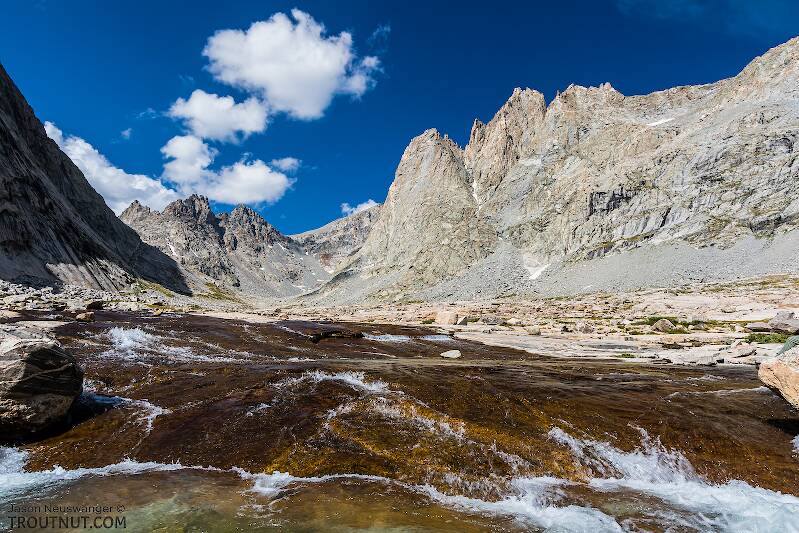
Salmonflies
Pteronarcys californica
The giant Salmonflies of the Western mountains are legendary for their proclivity to elicit consistent dry-fly action and ferocious strikes.
Featured on the forum

Troutnut is a project started in 2003 by salmonid ecologist Jason "Troutnut" Neuswanger to help anglers and
fly tyers unabashedly embrace the entomological side of the sport. Learn more about Troutnut or
support the project for an enhanced experience here.
Mayfly Genus Anthopotamus (Golden Drakes)
These mayflies have something for everyone. For the angler, they offer a chance to fish large dry flies to a rise on midsummer evenings when little else is on the water. To the entomologist they are interesting for their unique placement mid-way between the burrower and crawler groups of nymphs. Another curious characteristic is that the eyes of the adults are the same size in both genders; this is very unusual in mayflies.
Where & when
See the individual species pages for distribution and timing details. Anthopotamus distinctus is the main species in the East, and Anthopotamus myops is more common in the Midwest.In 99 records from GBIF, adults of this genus have mostly been collected during June (48%), July (34%), and August (12%).
In 34 records from GBIF, this genus has been collected at elevations ranging from 618 to 5003 ft, with an average (median) of 3133 ft.
Genus Range
Hatching behavior
These mayflies emerge fairly quickly, but they may linger on the surface for a while as their wings dry, making dun patterns the imitation of choice. They can make some commotion which is worth imitating if a still pattern does not work.
Caucci and Nastasi in Hatches II say that the duns begin hatching when the temperature drops below 70°F in the evenings. However, in Matching the Hatch, Ernest Schwiebert reports a hatch when the water temperature was a steamy 78°F. The trout are unlikely to respond at such times.
Spinner behavior
Time of day: Twilight to late night
Nymph biology
Current speed: Slow to Medium
Substrate: Detritus over sand, gravel, or silt
Environmental tolerance: They have an unusually high tolerance for warm, shallow water.
They become active on the bottom shortly before emerging, and fishing nymph imitations before the hatch may reward the angler.
Start a Discussion of Anthopotamus
References
- Arbona, Fred Jr. 1989. Mayflies, the Angler, and the Trout. Nick Lyons Books.
- Caucci, Al and Nastasi, Bob. 2004. Hatches II. The Lyons Press.
- Fauceglia, Ted. 2005. Mayflies . Stackpole Books.
- Knopp, Malcolm and Robert Cormier. 1997. Mayflies: An Angler's Study of Trout Water Ephemeroptera . The Lyons Press.
- Schwiebert, Ernest G. 1955. Matching the Hatch. MacMillan Publishing Company.
Mayfly Genus Anthopotamus (Golden Drakes)
Taxonomy
Species in Anthopotamus
Anthopotamus distinctusCream Duns
0
0
Anthopotamus myops
0
0
Anthopotamus neglectus
0
0
Anthopotamus verticis
0
0
Species in Anthopotamus: Anthopotamus distinctus, Anthopotamus myops, Anthopotamus neglectus, Anthopotamus verticis


